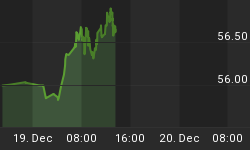Chart 1 shows the recent behavior of the 3-month interbank loan rates in U.S. dollars and euros. Both in dollar and euro terms, these interest rates began drifting up in the second half of April as the Greek, Portugal and Spain (GPS) sovereign debt challenges came to the fore. If GPS were to default on its sovereign debt, this would have an adverse impact on some European banks. These potential losses for European banks caused interbank lending to "tighten up," thereby driving up interbank loan rates. Although U.S. banks have much less direct exposure to GPS sovereign debt than do European banks, U.S banks have indirect exposure via their interbank lending to European banks. Hence, the interest rate on U.S. dollar interbank loans went up. Another reason the interest rate on U.S. dollar interbank loans increased was that European banks were scrambling to obtain U.S. dollar funding in addition to euro funding. Toward the end of May, the interest rate on 3-month dollar-based interbank loans leveled off, but the interest rate on 3-month euro-based interbank loans has continued to rise.
Chart 1
Why the divergence between the interest rates denominated in dollar vs. euros? Part of the explanation might have to do with the Fed's re-activation of dollar swap lines with major foreign central banks on May 9 and May 10. This alleviated some of the liquidity tightening being experienced by European banks with regard to their dollar funding needs. By re-activating its dollar swap lines, the Fed has indirectly helped alleviate liquidity pressures on U.S. banks as well as European banks.
The ECB has agreed to take Greek sovereign debt as collateral for short-term loans to euro-zone commercial banks regardless of the credit rating of this Greek debt. And this is good. But the ECB is discontinuing as of Thursday a 1-year maturity funding program for euro-zone banks. This has created anxiety among some Spanish banks. Although the ECB has said that 3-month funding will be abundant, some capital-challenged banks would prefer to lock-in funding for a year rather than having to refund four times a year. This is a factor putting upward pressure on term euro-based interbank loan rates.
It is interesting to me how the ECB's policy approach has shifted of late. Prior to the Lehman crisis, the ECB seemed to pay more attention to the behavior of monetary aggregates than other central banks. The ECB appeared to buy into the Friedman proposition that inflation is always and everywhere a monetary phenomenon. But for some reason, the ECB now appears worried that it might be pursuing too accommodative a monetary policy despite the fact that growth in euro-zone monetary aggregates is exceptionally weak (see Chart 2). Jean-Claude, lighten up. Renew the 1-year term funding.
Chart 2















